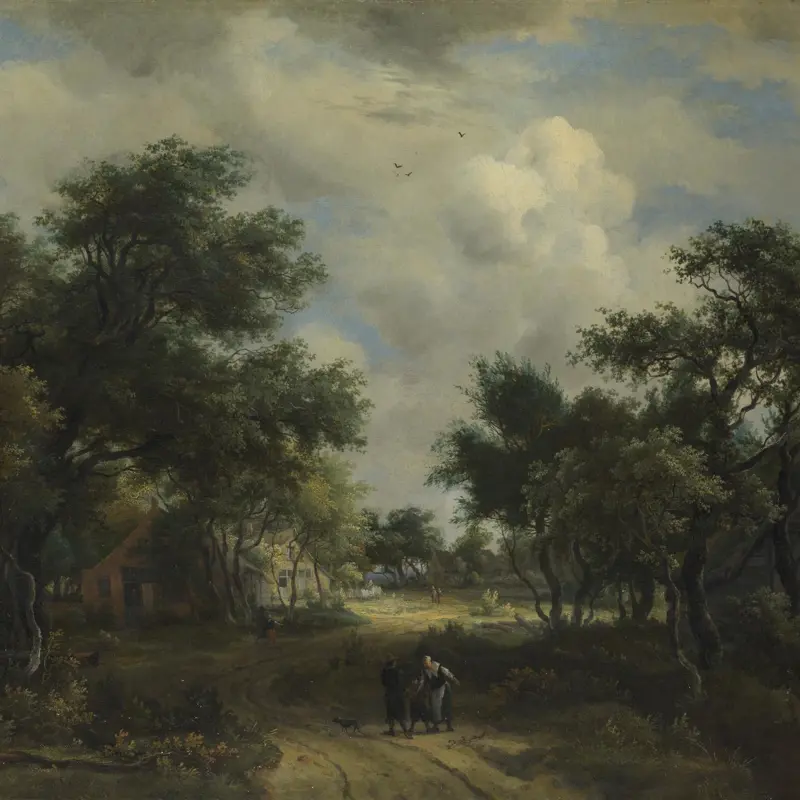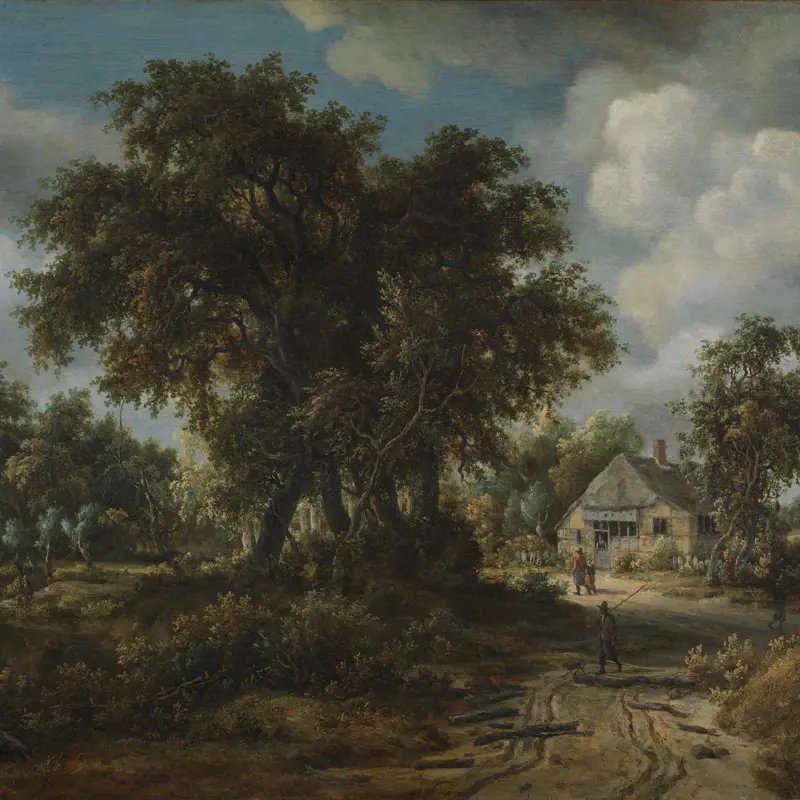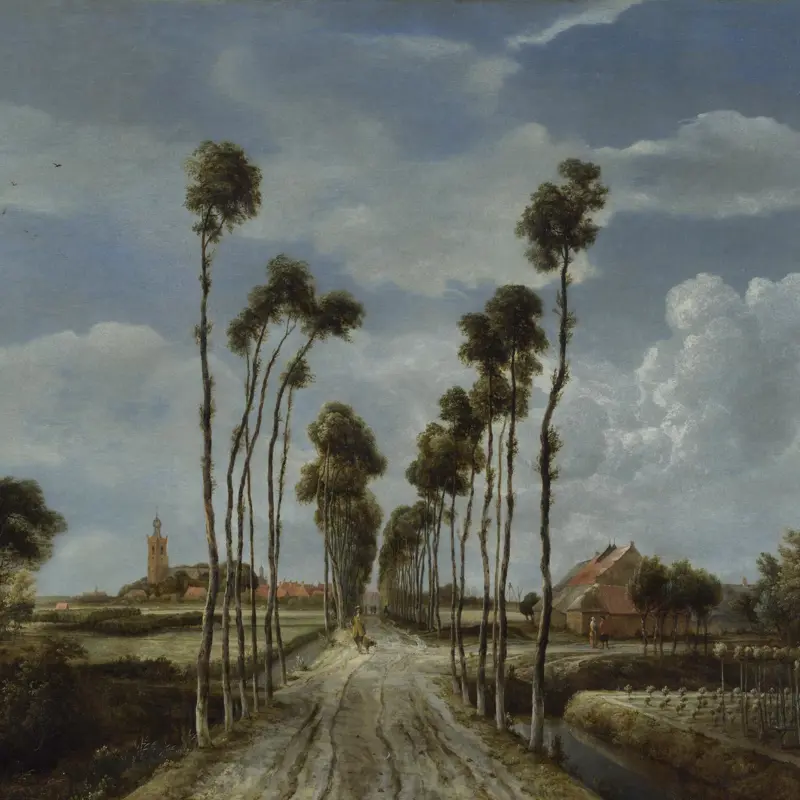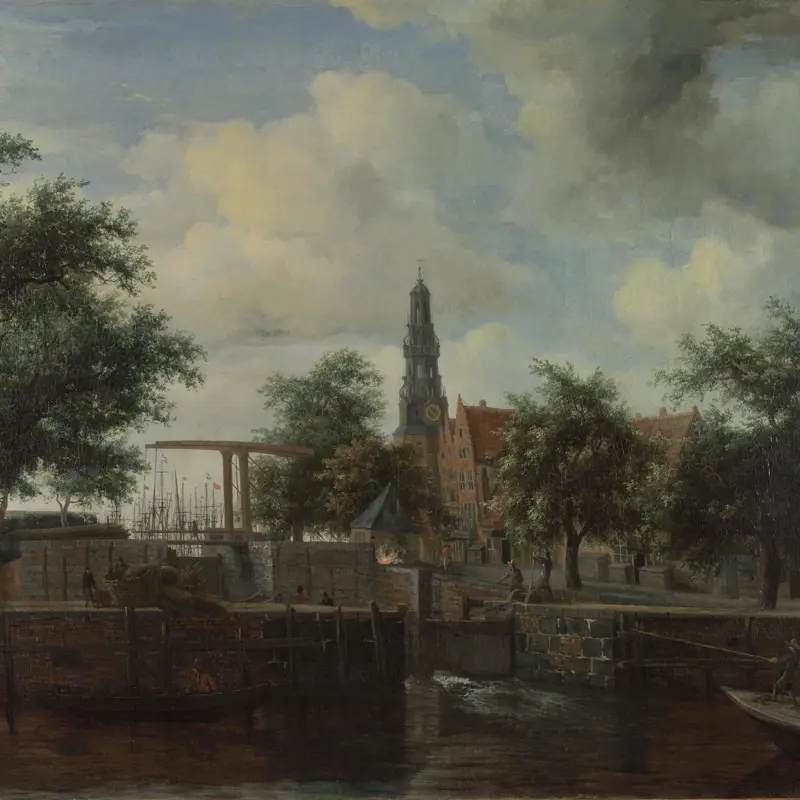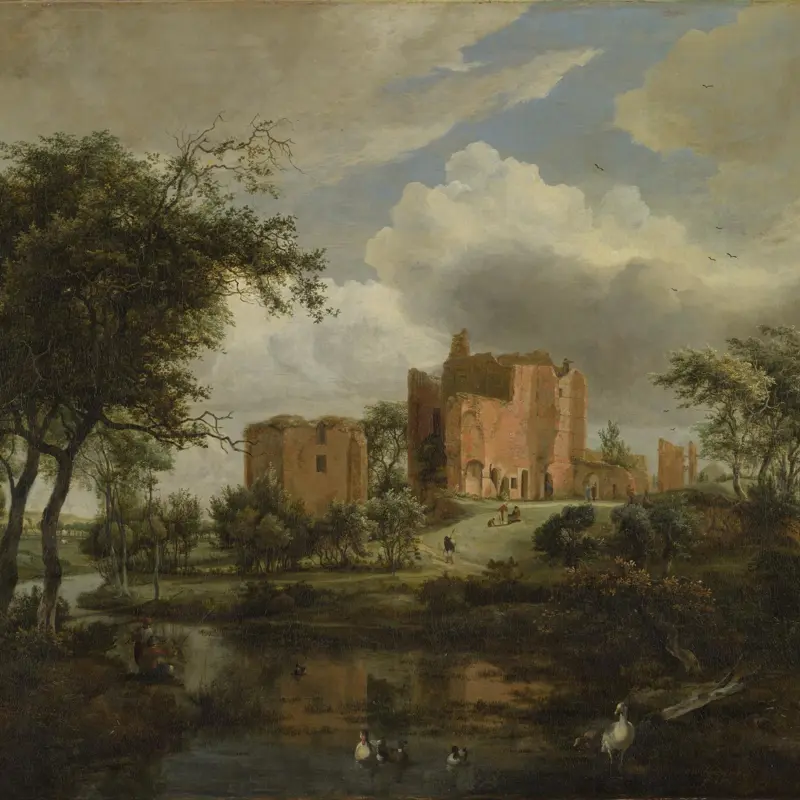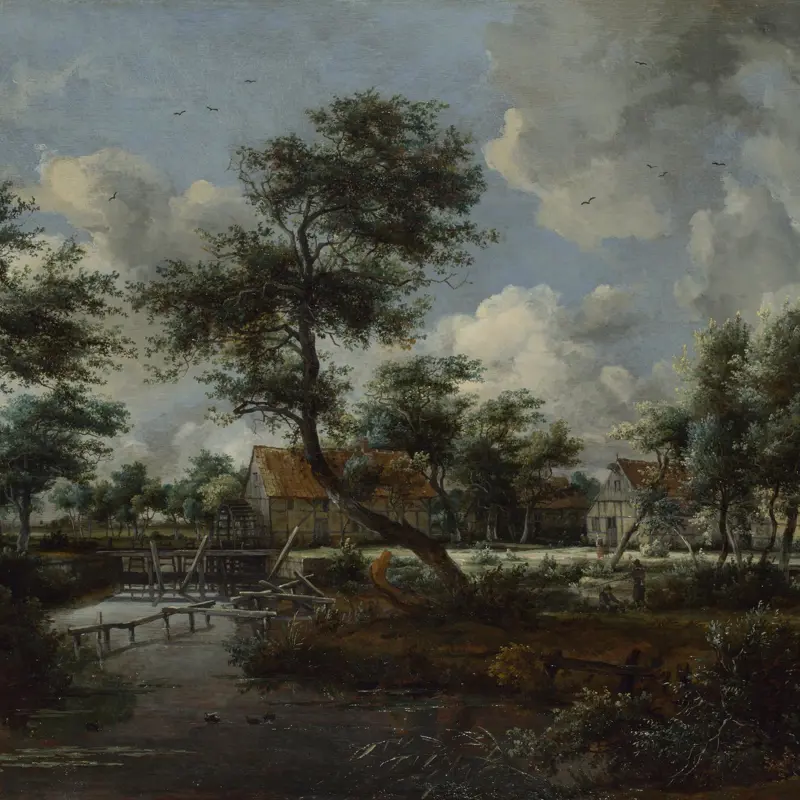Meindert Hobbema, 'A Woody Landscape with a Cottage', about 1665
About the work
Overview
A rutted cart track leads straight into the middle of the picture. A group of figures are caught in a patch of sunlight while a cottage merges into the shadows. A frieze of trees stands out against a sunny glade and a cloudy sky beyond. Many of Hobbema’s landscapes were composed around these specific elements. The vast majority were almost certainly not real views, but studio paintings designed to evoke the woodlands around Haarlem near his home town of Amsterdam.
This painting is an archetypal example of Hobbema’s picturesque, positive evocation of country life, with his harmonious view of the world subtly underlined in the composition itself. The painting is full of curves and meanders; even the strong diagonals of the cottage roofline are softened by the surrounding foliage. There is balance too – the canopy of the tallest tree is reflected by the shape of the cloud next to it, and the three figures in the foreground form a neat symmetrical group, right on the centre line of the painting.
Key facts
Details
- Full title
- A Woody Landscape with a Cottage
- Artist
- Meindert Hobbema
- Artist dates
- 1638 - 1709
- Date made
- about 1665
- Medium and support
- oil on canvas
- Dimensions
- 99.5 × 130.5 cm
- Acquisition credit
- Wynn Ellis Bequest, 1876
- Inventory number
- NG995
- Location
- Not on display
- Collection
- Main Collection
- Previous owners
Provenance
Additional information
Text extracted from the ‘Provenance’ section of the catalogue entry in Neil MacLaren, revised and expanded by Christopher Brown, ‘National Gallery Catalogues: The Dutch School: 1600–1900’, London 1991; for further information, see the full catalogue entry.
Exhibition history
-
2023Masterpieces from the National GalleryShanghai Art Museum East17 January 2023 - 7 May 2023National Museum of Korea2 June 2023 - 9 October 2023Hong Kong Palace Museum22 November 2023 - 11 April 2024Chimei Museum2 May 2024 - 1 September 2024
Bibliography
-
1829
J. Smith, A Catalogue Raisonné of the Works of the Most Eminent Dutch, Flemish, and French Painters: In Which is Included a Short Biographical Notice of the Artists, with a Copious Description of Their Principal Pictures […], 9 vols, London 1829-1842
-
1854G.F. Waagen, Treasures of Art in Great Britain: Being and Account of the Chief Collections of Paintings, Drawings, Sculptures, Illuminated Mss. […], vol. 2, trans. E. Eastlake, London 1854
-
1907C. Hofstede de Groot, Catalogue Raisonné of the Works of the Most Eminent Dutch Painters of the Seventeenth Century, 10 vols, London 1907
-
1907C. Hofstede de Groot, Catalogue Raisonné of the Works of the Most Eminent Dutch Painters of the Seventeenth Century, 10 vols, London 1907
-
1960Maclaren, Neil, National Gallery Catalogues: The Dutch School, 2 vols, London 1960
-
1976C. Brown, Art in Seventeenth Century Holland (exh. cat. The National Gallery, 30 September - 12 December 1976), London 1976
-
1983C. Brown, 'Rubens' Watering Place: An Examination of His Landscape Technique', Ringling Museum of Art Journal, 1983, pp. 130-49
-
1983C. Wright, Dutch Landscape Painting (exh. cat. Laing Art Gallery, 13 October - 3 December 1983), Newcastle upon Tyne 1983
-
1987B.P.J. Broos, Meesterwerken in het Mauritshuis, Den Haag 1987
-
1991Maclaren, Neil, revised by Christopher Brown, National Gallery Catalogues: The Dutch School, 1600-1900, 2nd edn (revised and expanded), 2 vols, London 1991
-
1991Christie's, Old Master Paintings, London, 13 December 1991
-
1994P. Sutton, El siglo de oro del paisaje Holandés (exh. cat. Museo Nacional Thyssen-Bornemisza, 11 November 1994 - 12 February 1995), Madrid 1994
-
1995B.P.J. Broos et al., The Amateur's Cabinet, Seventeenth Century Dutch Masterpieces from Dutch Private Collections (exh. cat. Mauritshuis, 1995), The Hague 1995
-
2001
C. Baker and T. Henry, The National Gallery: Complete Illustrated Catalogue, London 2001
About this record
If you know more about this work or have spotted an error, please contact us. Please note that exhibition histories are listed from 2009 onwards. Bibliographies may not be complete; more comprehensive information is available in the National Gallery Library.

